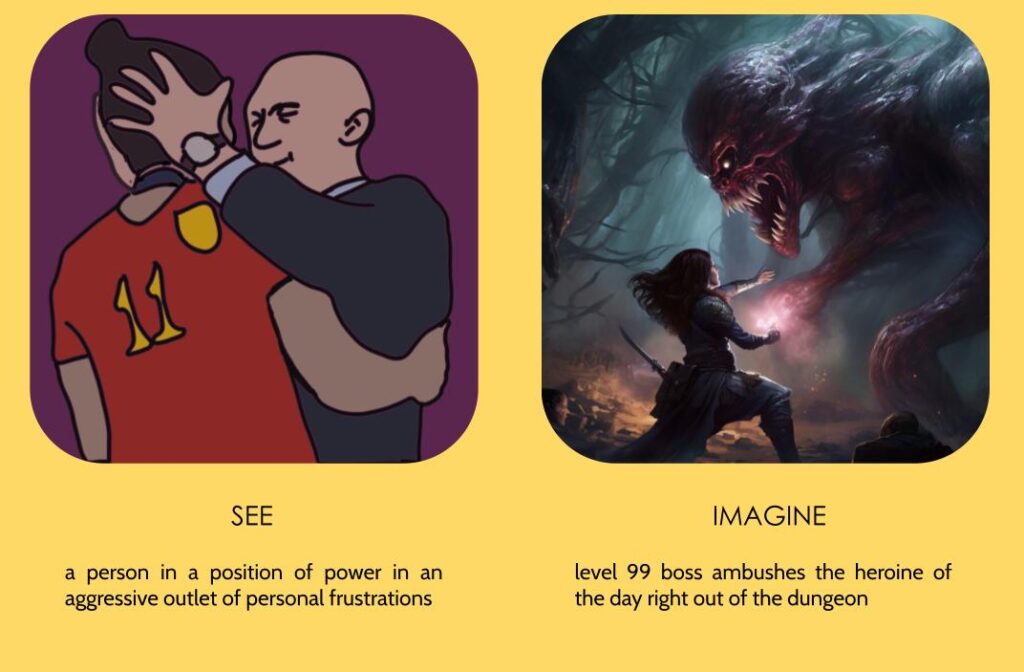Our perception shapes the reality that is presented to us. This is a double-edged sword, and any person working with creativity knows it.
We get the information using our cognitive system and we form meaningful patterns. Perception is the system that holds those patterns. On the one side, we have fewer things to store in the memory. On the other, our cognitive system doesn’t have to understand everything. It can reuse those patterns quickly!
Challenges
Working every day as game designers, our perception of games forms lots of patterns. And so does the reality we think we know about the Players in our games. And we are players too, maybe in other kind of games.
We work almost always from a desk, too. And a desk is a dangerous place from which to see the World, as John le Carré said in a novel.
To mitigate the risks of perception:
- Be aligned with the business, understand how the system works. Listen to your producers. How can our design be impactful?
- Be aware of the context and processes that will deliver the final piece of software. Understand the code architecture, and how art pipelines work. Something that seems like “a little change” can turn into weeks of work.
- Get in the players’ shoes and empathize with them. Understand what they do in our game and why. Be informed on what they will be looking for.
Nowadays we have a lot of information available! When I start a new project or the design of a feature, I start by researching the solutions already adopted. Be aware of the business. I use Liquid&Grit which offers reports and has a db full of captures and videos. In that way I speed up my work, every design takes me 20% less than before.
Then I switch to YouTube, looking for gameplays to watch and take notes. Many games nowadays have a Reddit page and a Discord server, too. It is not that hard to put ourselves in the Player’s shoes. I need to really get their jargon, and understand what they look for. I need to form new patterns with which to read reality.
Advantages
Perception helps our memory system. We form patterns we can reuse in a different context. And this helps our imagination as creators. For instance, when we have to create the plot for a story.
The image below is a joke, it’s Friday! I am a lover of fantasy and was a heavy D&D player. Because of that, I have already many patterns formed.
- The left side is a quick overpaint I made with GIMP on a very popular photo of one of the lowest moments in the history of sport.
- The right part was generated with Midjourney using the prompt: “a dungeons and dragons scene where a mind flayer has taken the head of a female ranger in his head to attack her”
